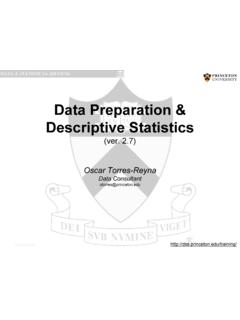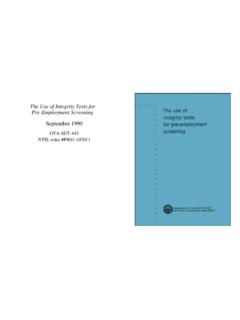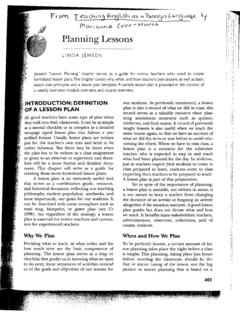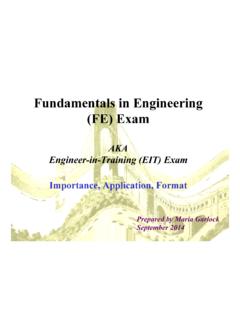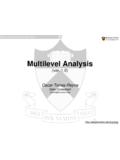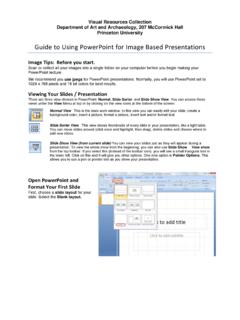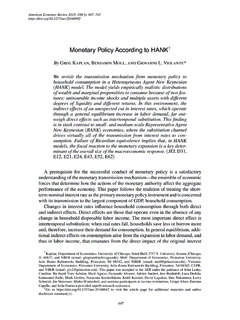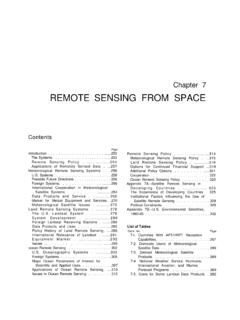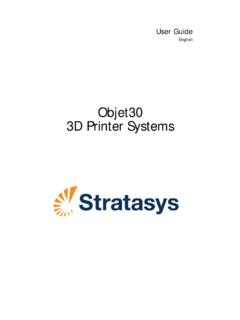Transcription of Enzymatic Reactions in Microfluidic Devices: Michaelis ...
1 Enzymatic Reactions in Microfluidic Devices: Michaelis -Menten KineticsWilliam D. Ristenpart, Jiandi Wan, and Howard A. Stone*School of Engineering and Applied Sciences, Harvard University, Cambridge, Massachusetts 02138 Kinetic rate constants for Enzymatic Reactions are typicallymeasured with a series of experiments at different sub-strate concentrations in a well-mixed container. Here wedemonstrate a Microfluidic technique for measuringMichaelis-Menten rate constants with only a singleexperiment. Enzyme and substrate are brought togetherin a coflow Microfluidic device, and we establish analyti-cally and numerically that the initial concentration ofproduct scales with the distancexalong the channel asx5/2.
2 Measurements of the initial rate of product forma-tion, combined with the quasi-steady rate of productformation further downstream, yield the rate corroborate thex5/2scaling result experimentallyusing the bioluminescent reaction between ATP andluciferase/luciferin as a model Reactions , wherein one reacting species serves asa catalyst for converting another species into a desired product,are ubiquitous in biological systems. Accordingly, accuratemeasurements of the rate constants associated with specificenzymatic Reactions are crucial for applications in biochemistry,medicine, food science, and biochemical engineering.
3 Manyenzymatic Reactions are characterized by the Michaelis -Menten1reaction schemewhere E, S, and P represent, respectively, the enzyme, substrate,and product. In a well-mixed system, the initial rate of productformation ( , the reaction velocity ) isprovided that the concentration of intermediate species E the subscript i denotes the initial concentra-tion or reaction rate, andKm (kcat+k2)/k1is the so-calledMichaelis constant, with dimensions of concentration. The con-stantKmserves as an important indicator of whether the reactionrate is limited by the amount of substrate ( , [S]i,Km)orbythe enzyme being saturated ([S] ).
4 Consequently, determi-nation ofKmis a primary objective of kinetic analyses on enzymaticreactions. The conventional method to determineKmis to measurethe initial reaction rate for many different initial substrateconcentrations [S]iand to fit the data to eq 2. This approachrequires multiple separate experiments to yield accurate measure-ments this work we propose a different approach, based on a coflowmicrofluidic device, which yields the Enzymatic rate constantsk1andkcatwith a single experiment. The advantages and generalfeatures of Microfluidic devices have been widely discussed;3,4akey advantage is the possibility of measuring rate constants withsubstantially reduced amounts of enzyme compared to standardtechniques.
5 Previous work on coflow Microfluidic devices5-11hasfocused on Reactions of the form A+B798 KeqC, where A and Bare brought together at a Y-shaped junction (cf. Figure 1).Provided the channel dimensions are sufficiently small, then theflow is laminar and the species slowly diffuse toward one another(transverse to the primary flow direction) and then react to formC. The kinetic parameters are determined by measuring [C] as afunction of position downstream from the junction. For smallmolecules with comparable diffusivities, however, there is nostraightforward procedure to extract rate constants from theexperimental data; the rate constants must be treated as fittingparameters in numerical computations of the full set of reaction-diffusion equations.
6 Reliance on numerical calculations is incon-venient for experimentalists, so a compact analytical solution we demonstrate that under appropriate conditions thegoverning equations, accounting for convection, diffusion, andreaction, are simplified and a simple power-law solution is obtainedfor the spatial evolution of the product concentration. Specifically,analytical and numerical calculations show that the product* Corresponding author. Phone: (617) 495-3599. E-mail: Michaelis , L.; Menten, M. ,49, 333.(2) Bailey, J. E.; Ollis, D. Engineering Fundamentals; McGraw-Hill Inc.: New York, 1986.(3) Stone, H.
7 A.; Stroock, A. D.; Ajdari, Rev. Fluid ,36,381.(4) Squires, T. M.; Quake, S. Mod. ,77, 977.(5) Kamholz, A. E.; Weigl, B. H.; Finlayson, B. A.; Yager, ,71, 5340.(6) Kamholz, A. E.; Schilling, E. A.; Yager, ,80, 1967.(7) Kamholz, A. E.; Yager, ,80, 155.(8) Baroud, C. N.; Okkels, F.; Menetrier, L.; Tabeling, Rev. E2003,67, 060104R.(9) Salmon, J. B.; Dubrocq, C.; Tabeling, P.; Charier, S.; Alcor, D.; Jullien, L.;Ferrage, ,77, 3417.(10) Benninger, R. K. P.; Hofmann, O.; O nfelt, B.; Munro, I.; Dunsby, C.; Davis,D. M.; Neil, M. A. A.; French, P. M. W.; de Mello, A. Chem., ,46, 2228.(11) Matthews, S. M.; Elder, A.
8 D.; Yunus, K.; Kaminski, C. F.; Brennan, C. M.;Fisher, A. ,79, +S{\}k1k2E S98kcatE+P(1)d[P]dtji)kcat[E]i([S]iKm+[S ]i)(2)Anal. ,80,3270-32763270 Analytical Chemistry, Vol. 80, No. 9, May 1, CCC: $ 2008 American Chemical SocietyPublished on Web 03/21/2008concentration scales in the downstreamxdirection asx5/2, with aprefactor proportional tok1kcat. Further downstream the speciesare well mixed, and for sufficiently high initial substrate concen-trations the product concentration scales linearly inxwith a slopeproportional tokcat. Thus, measuring the product concentrationas a function of position both near and far from the Y-junctionyields the desired rate constants, without necessitating comparisonto numerical calculations.
9 Moreover, the necessary measurementscan be accomplished in a single Microfluidic first summarize the governing equations and provide ascaling argument for thex5/2power law. Numerical and experi-mental results then follow, and we close with a discussion ofpossible extensions to more complicated Model and Power-Law a pressure-driven flow along thex-axis of a microfluidicsystem with widthwand depthh(cf. Figure 1). The laminar flowprofile inside a Microfluidic channel depends in general on bothyandz. In microchannels with large aspect ratio ( ),however, the flow is mainly uniform in they-direction and parabolicin thez-direction.
10 Because of the parabolic profile, in general thespecies concentrations are not uniform in thez-direction;12,13theconcentration profiles near the top and bottom of the channel(where the velocity is lowest) are different compared to the centerof the channel. As a first approximation, we neglect this complexityand focus on the behavior near the center of the channel (z h/2) where the species concentrations are relatively uniform. Inthis case, the reaction-diffusion process may be modeled as , we assume that convective transport by a mean fluidvelocityudominates over diffusive transport in the downstreamx-direction.
